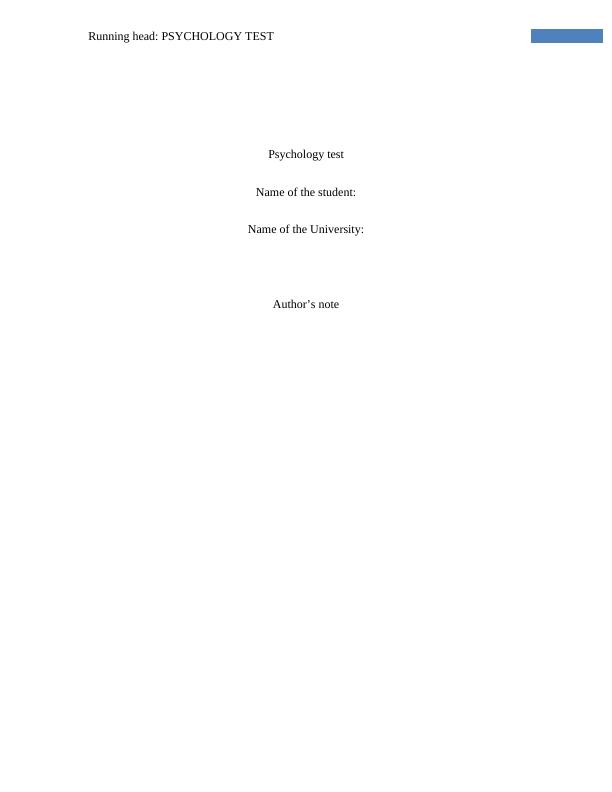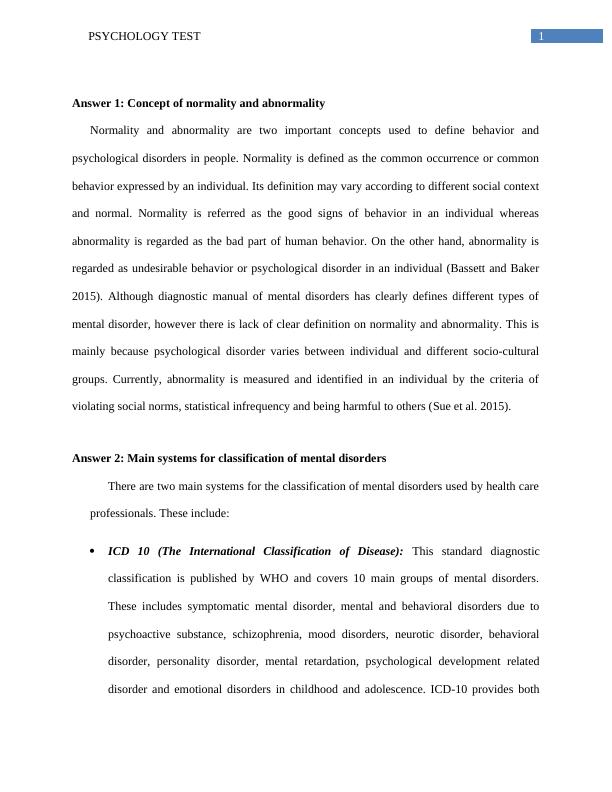Psychology Test: Normality and Abnormality, Classification of Mental Disorders, Models of Atypical Behavior and Treatment Options
9 Pages2309 Words480 Views
Added on 2023-06-15
About This Document
This psychology test covers topics such as normality and abnormality, classification of mental disorders, models of atypical behavior and treatment options. It discusses the concept of normality and abnormality, the main systems for classification of mental disorders, evaluation of models of atypical behavior, and different treatment options according to different models. The article also includes references to support the discussion.
Psychology Test: Normality and Abnormality, Classification of Mental Disorders, Models of Atypical Behavior and Treatment Options
Added on 2023-06-15
ShareRelated Documents
End of preview
Want to access all the pages? Upload your documents or become a member.
Abnormal Psychology: Classification, Diagnosis, and Influences of Heredity and Environment on Schizophrenia and Depression
|8
|2194
|119
Diagnostic and Statistical Manual of Mental Disorder
|11
|2150
|20
Statistical Manual of Mental Disorders
|5
|678
|19
Mental Health Issues and Legislative Guidance
|10
|2542
|20
Psychiatric Diagnostic Classification Systems and Suboptimal Outcome for Patients
|7
|2180
|425
The Role of The Mental Health Nurse
|11
|3185
|21



